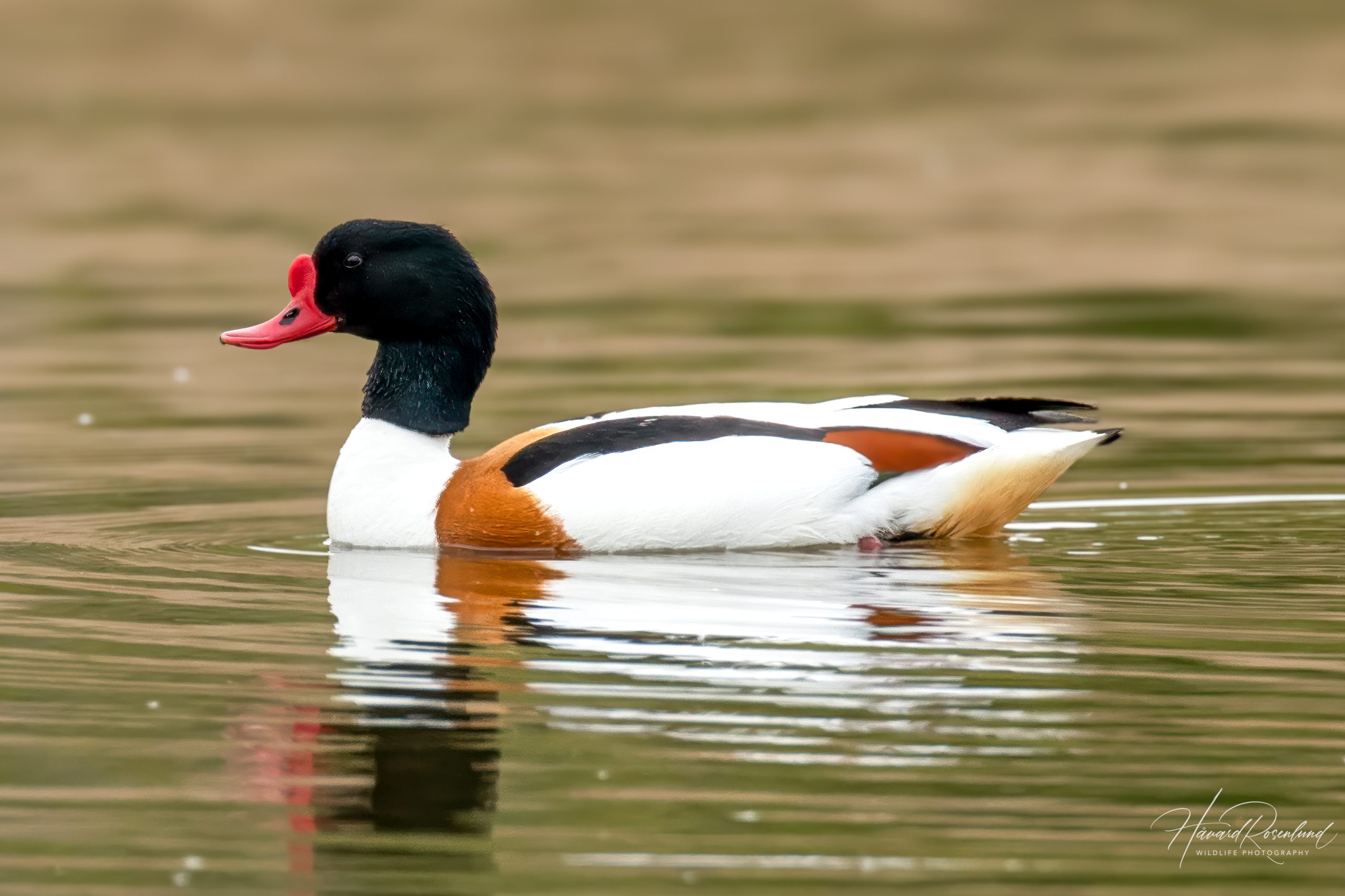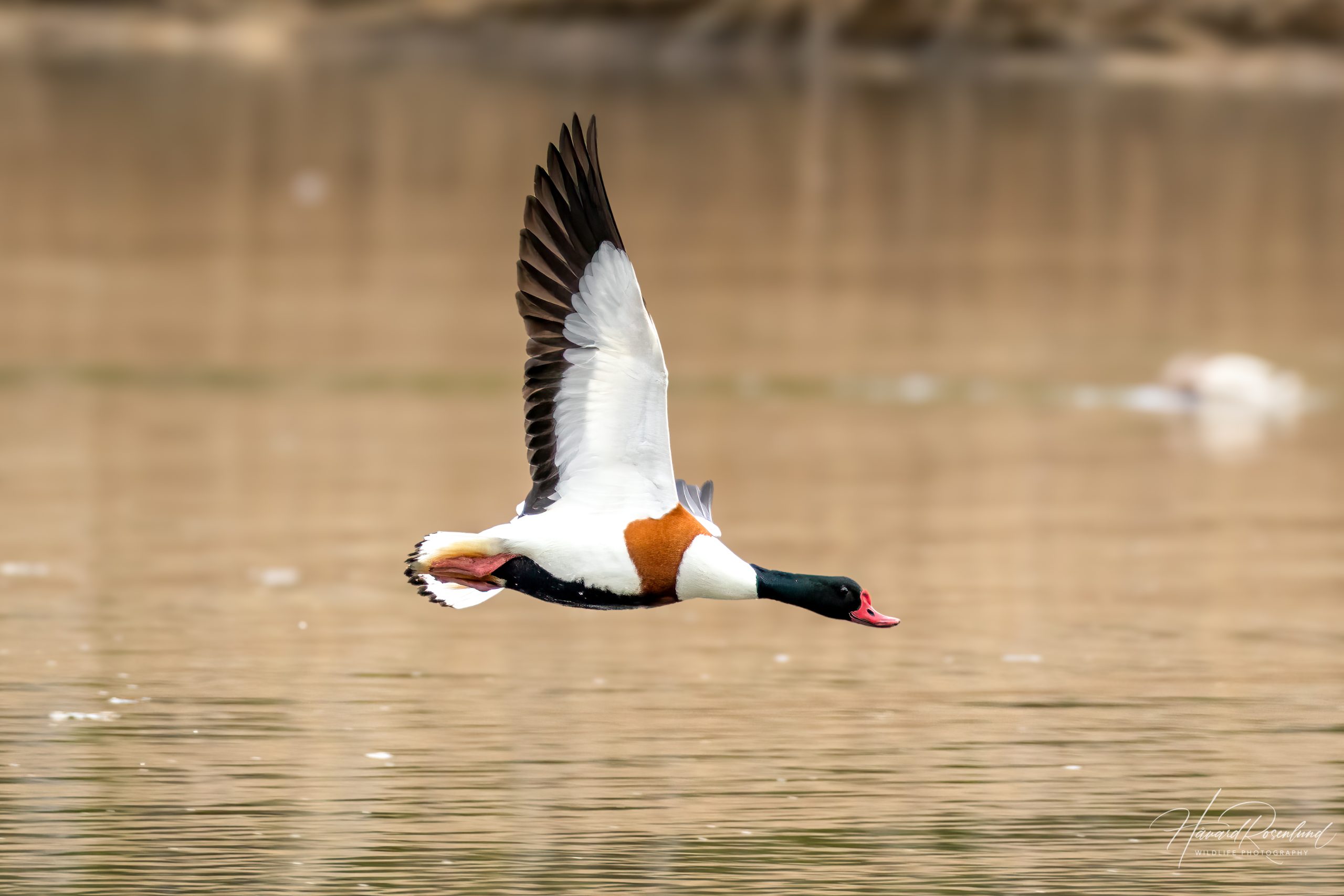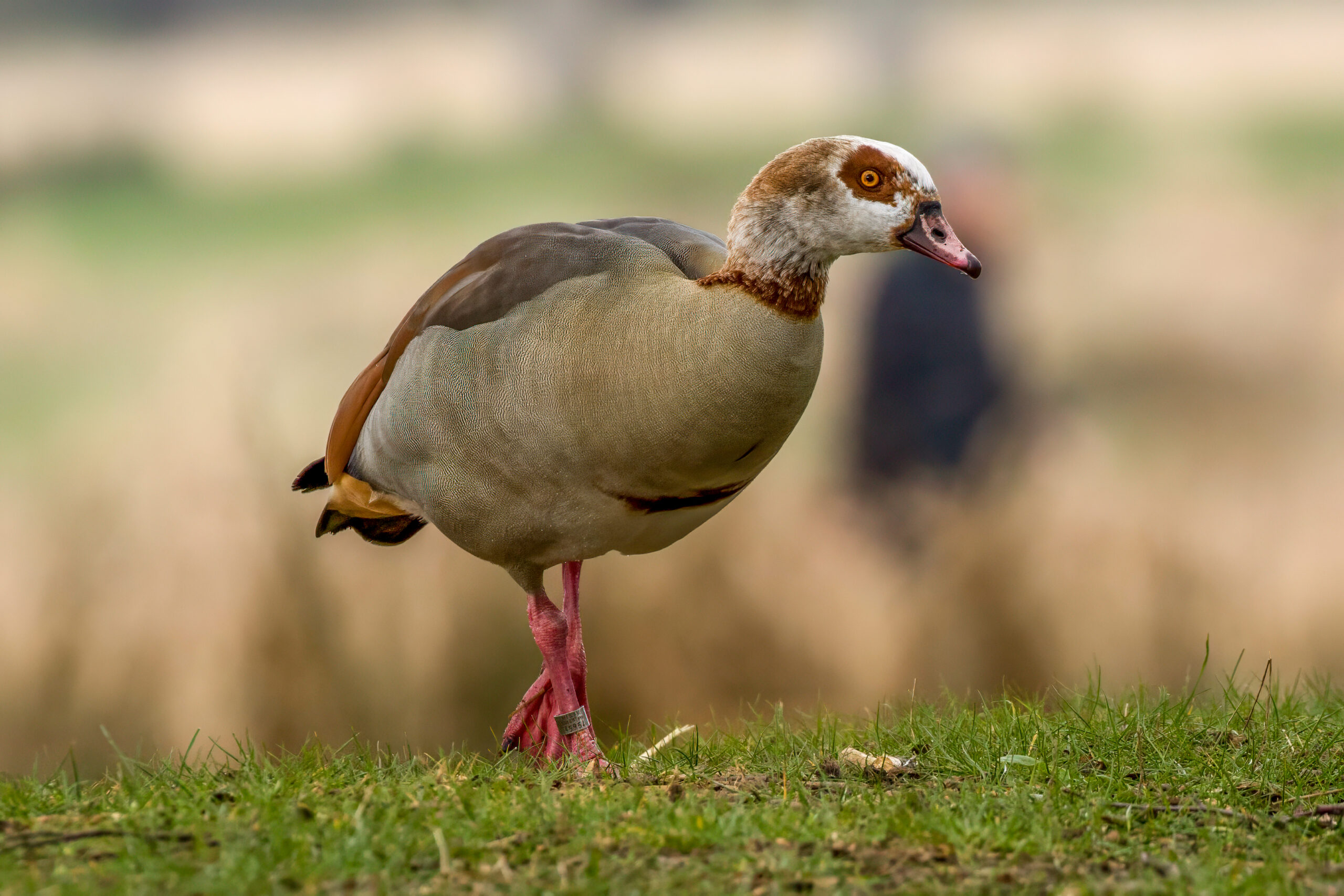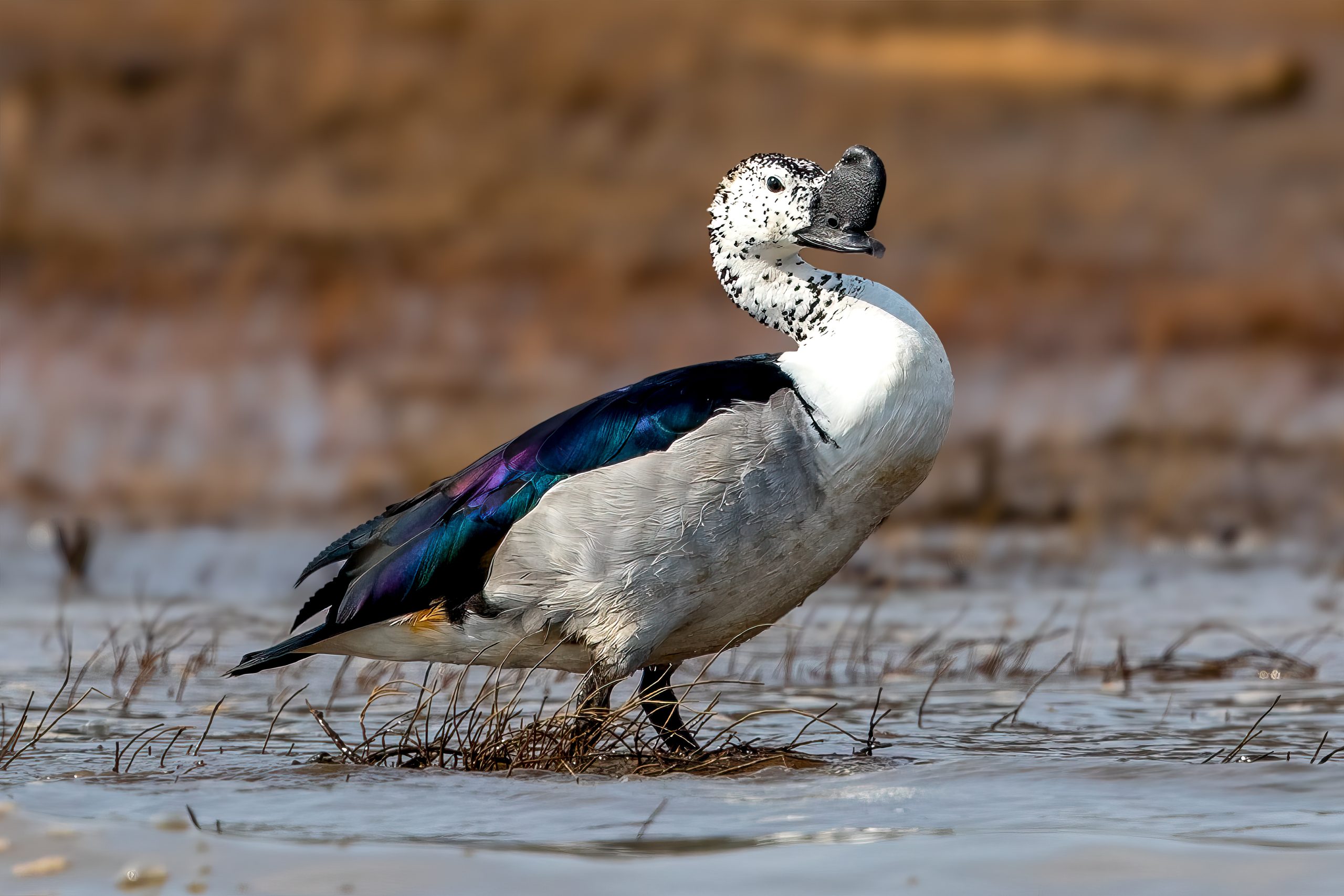Description
The common shelduck (Tadorna tadorna) is a distinct and strikingly beautiful waterfowl widely distributed across Eurasia, found from the British Isles across to Central Asia and the Far East. It typically measures between 58 and 67 cm (23 to 26 inches) in length, with a wingspan of 110 to 133 cm (43 to 52 inches). They weigh between 0.9 and 1.6 kg (2.0 to 3.5 lbs). Adult common shelducks have a predominantly white body with a dark green head, chestnut-colored breast band, and a distinct black stripe down the center of the belly. Their wings are white with black flight feathers, and they have a red bill and pinkish-red legs. Males and females are similar in appearance, though males tend to be slightly larger and possess a more prominent knob at the base of their bill during the breeding season.
Diet & habitat
The common shelduck predominantly inhabits coastal environments such as estuaries, tidal mudflats, and salt marshes. They are also found in brackish waters and inland freshwater lakes during the breeding season. These habitats provide abundant food resources and safe nesting sites. Their diet mainly consists of small invertebrates, particularly mollusks, crustaceans, and insects. They also feed on aquatic vegetation and algae. The common shelduck forages by dabbling and upending in shallow water, often seen filtering through mud and water with their bills to capture prey.
Migration
The common shelduck is a migratory species, though the extent of its migration varies by population. Birds in northern Europe often migrate to southern Europe or North Africa for the winter, while those in milder climates may undertake shorter migrations or remain resident year-round. They generally migrate in flocks, traveling at night or early morning. Migration typically occurs from late summer to early autumn, returning to breeding grounds from late winter to early spring. Migration distances can range from a few hundred to over a thousand kilometers, depending on their breeding and wintering locations.
A unique behavior of the common shelduck is its molt migration. After breeding, large flocks migrate to specific molting sites, such as the Wadden Sea, where they congregate to molt their flight feathers. This renders them flightless for several weeks, making these sites critical for their survival during this vulnerable period.
Nesting
Common shelducks are monogamous, forming long-term pair bonds. Their breeding season varies geographically but generally occurs from late spring to early summer. They prefer nesting in burrows, rabbit holes, or tree cavities near water, which provides protection from predators. The female lays a clutch of 8 to 12 creamy-white eggs. The incubation period lasts about 28 to 30 days, during which the female primarily takes on the incubation duties, while the male guards the territory. After hatching, the chicks are precocial and can leave the nest soon after birth, although they stay under the protection of their parents. Fledging occurs at about 45 to 50 days old.
Status
The common shelduck is currently classified as least concern by the IUCN Red List. Its global population is stable to possibly increasing and widespread, though localized threats such as habitat loss, pollution, and hunting can impact certain populations. Conservation efforts focus on protecting important breeding and wintering sites and maintaining wetland habitats.







